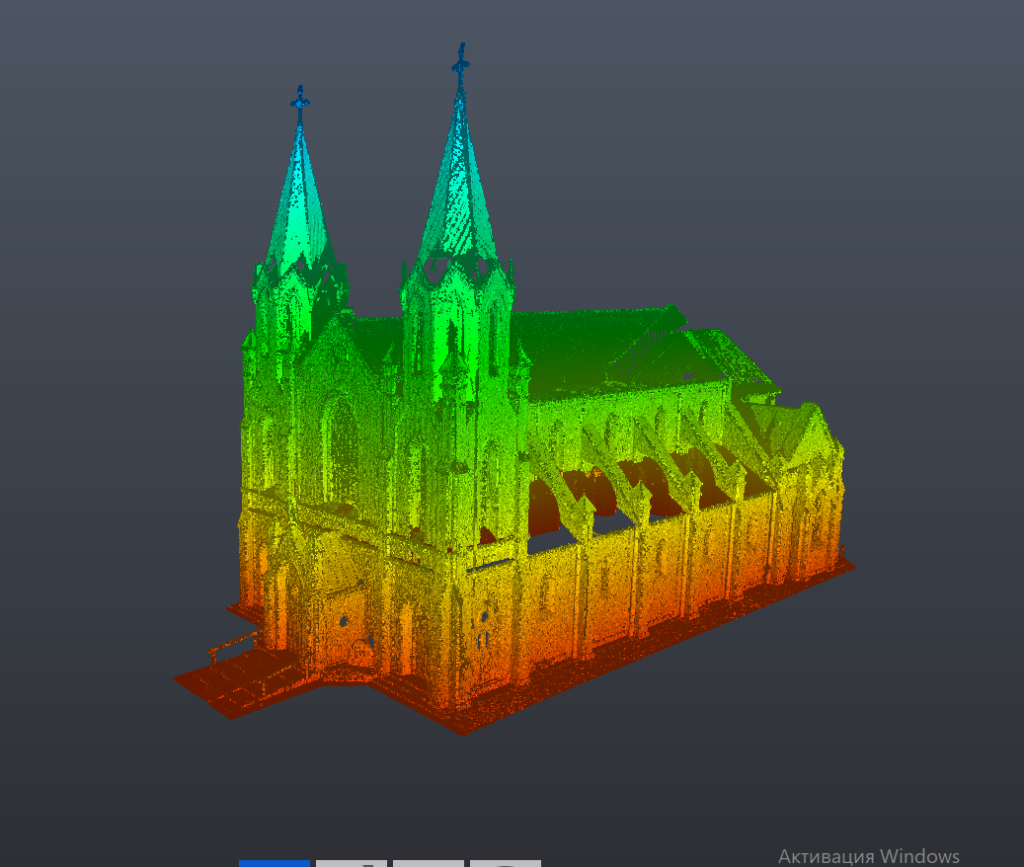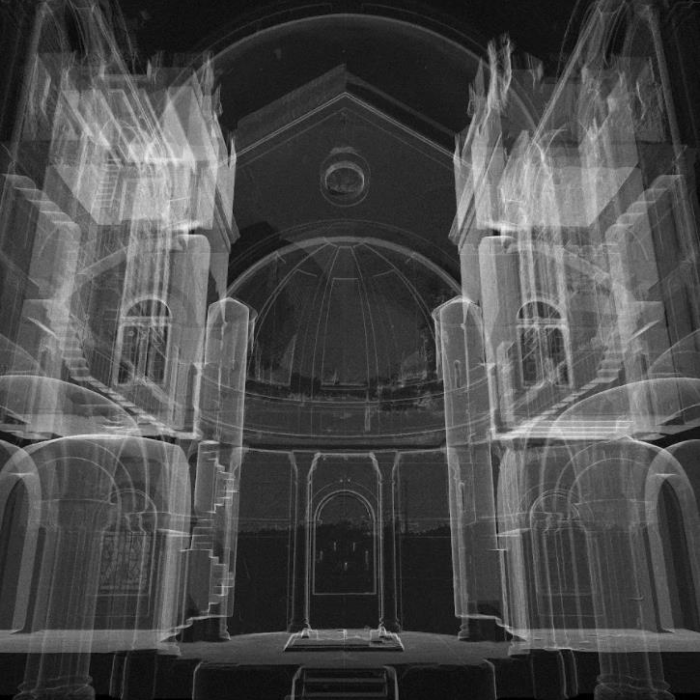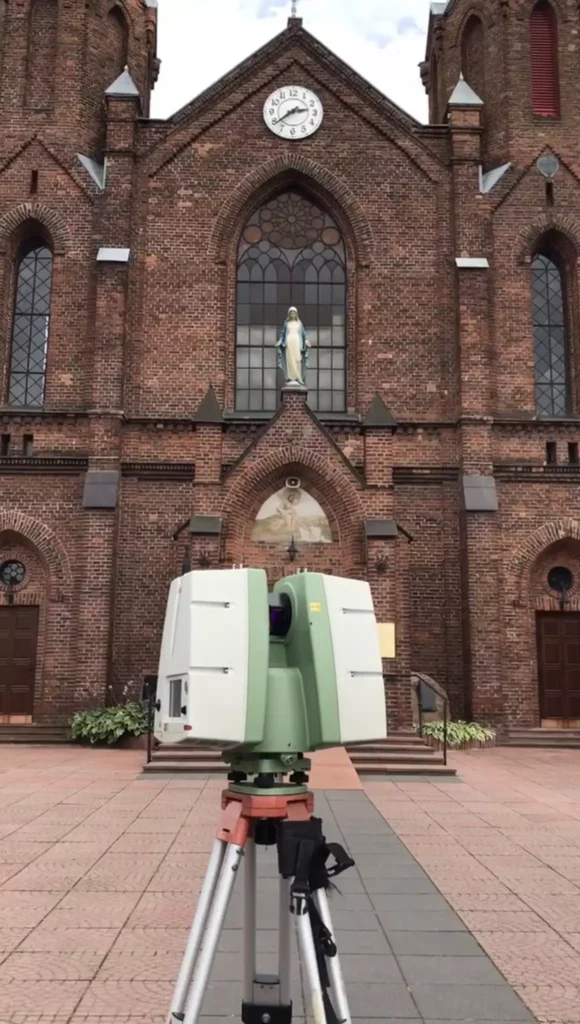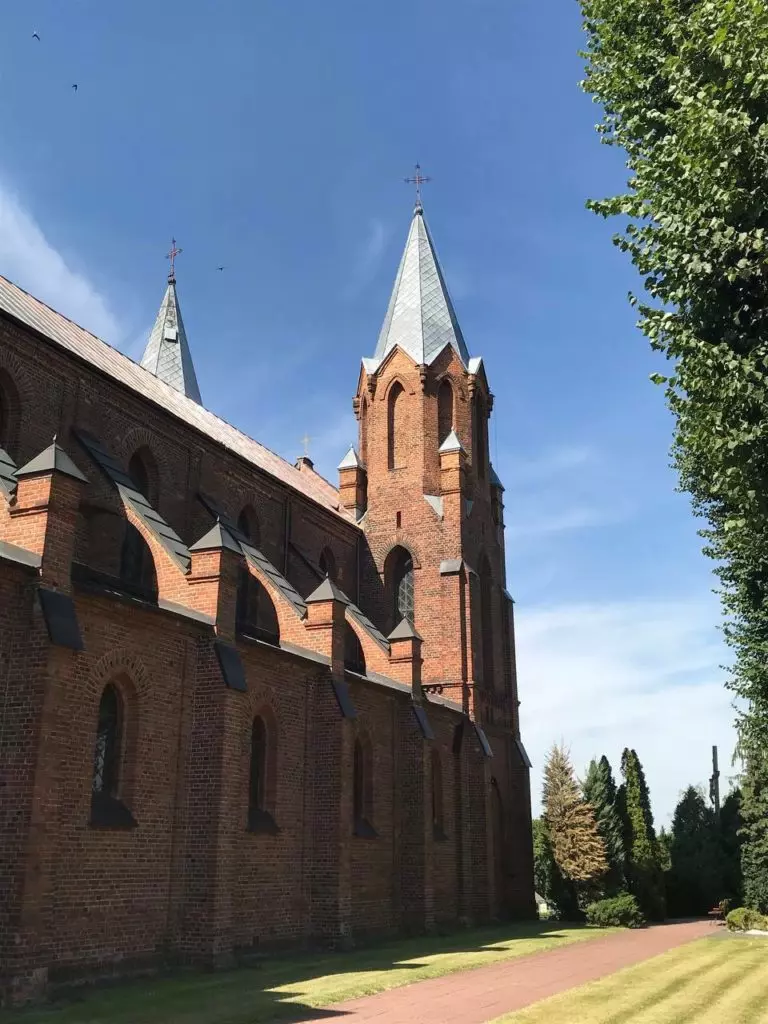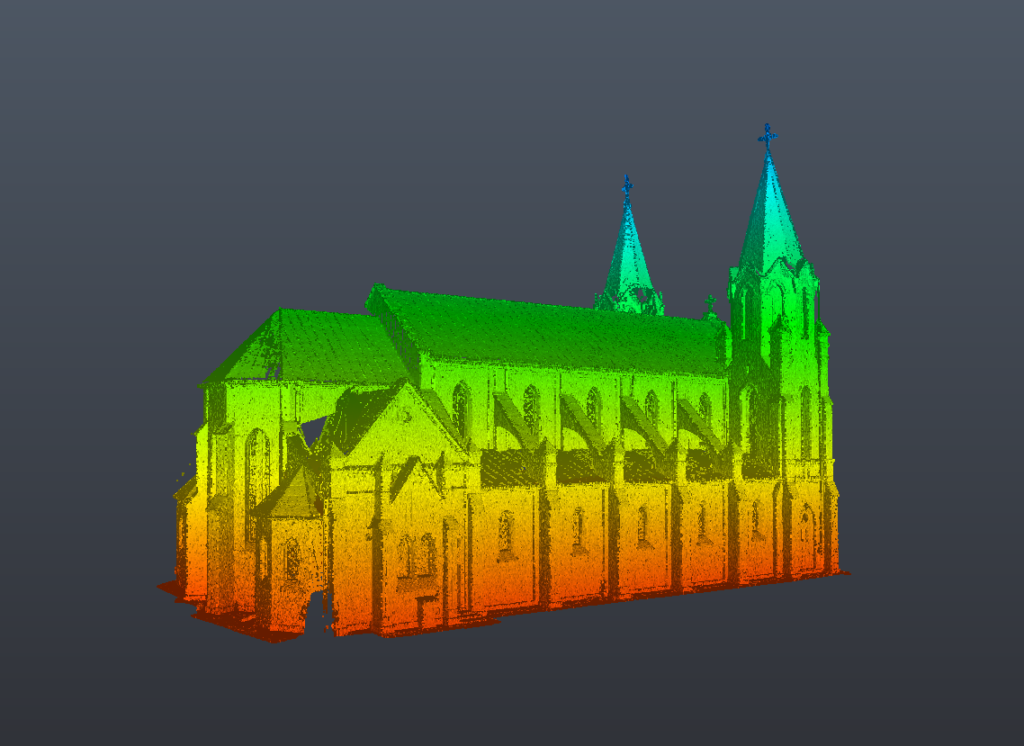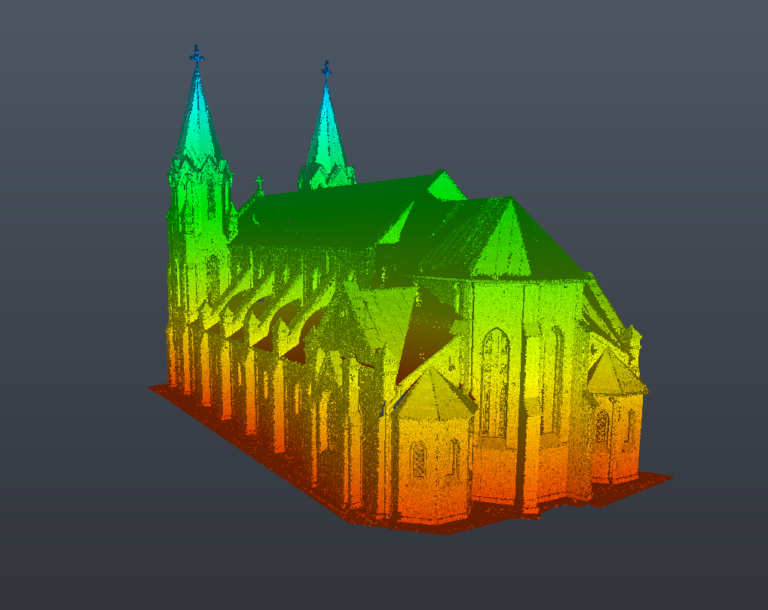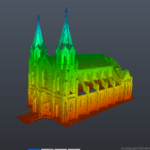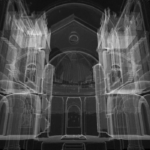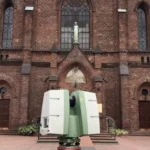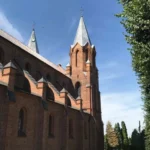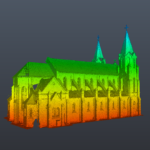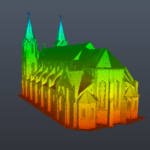Church Restoration through 3D Laser Scanning: A Detailed Project Overview
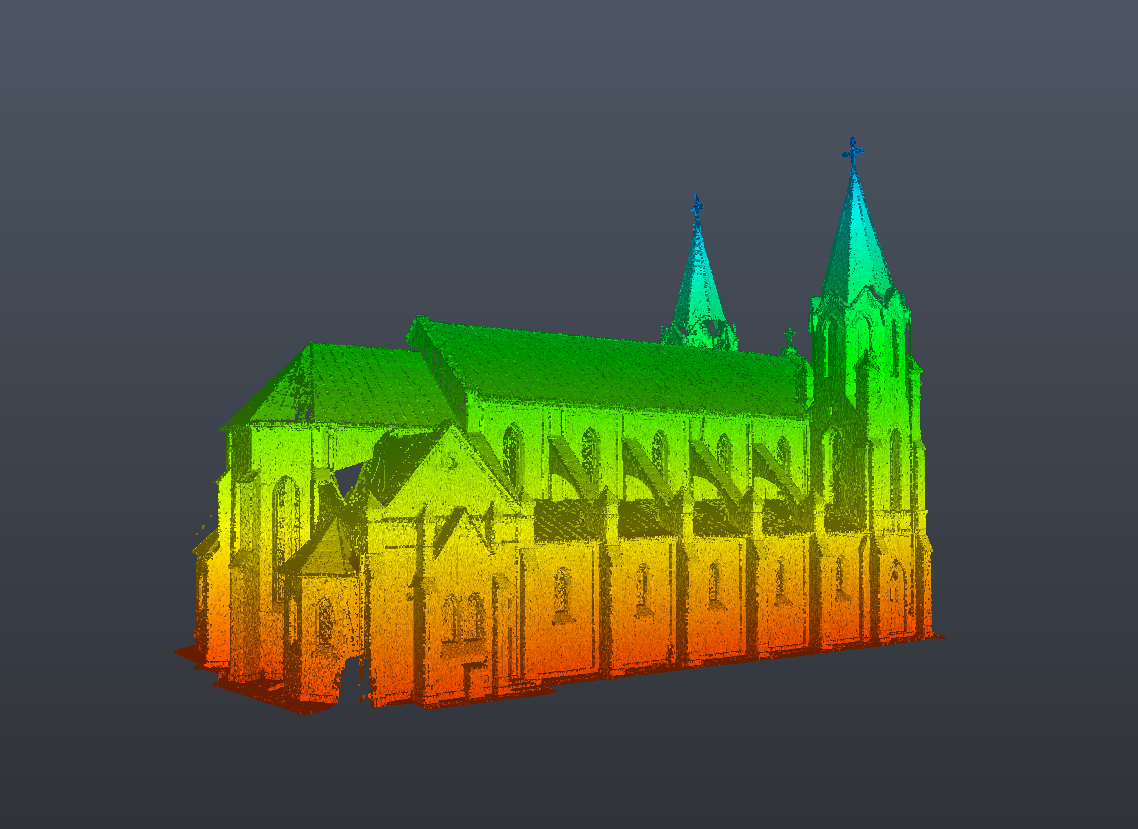
In the realm of architectural preservation, few technologies have proven as transformative as 3D laser scanning. Recently, we had the privilege to contribute to the preservation of a 19th-century church, an invaluable piece of cultural heritage. The project was commissioned by an architectural bureau with the objective of creating a highly detailed 3D model and 2D drawings to guide the restoration process. This article provides an in-depth look into how 3D laser scanning services was utilized to capture the intricate details of this historical building, ensuring its preservation for future generations.
Project Overview
Utilizing Technology to Preserve Cultural Heritage
Built in the 1800s, the church remains a remarkable example of the architectural brilliance of its era. However, decades of wear and environmental exposure necessitated a comprehensive restoration to maintain its structural integrity and aesthetic charm. The architectural bureau overseeing the project sought our expertise in 3D laser scanning to create accurate documentation that would facilitate this restoration.
Project Objectives
The main objectives of the project were:
- Capture Detailed 3D Models: Develop a 3D model of the church, including both external and internal elements.
- Generate Accurate 2D Drawings: Provide precise 2D drawings to serve as blueprints for the restoration.
- Ensure High-Level Accuracy: Deliver measurements with an accuracy of up to 1 millimeter to guide the restoration process.
- Preserve Architectural Details: Focus on preserving the original architectural details, including stained glass windows, carvings, and other intricate designs.
Project Execution
Step 1: Comprehensive 3D Laser Scanning Services
The initial phase of the project included a comprehensive 3D laser scan of the church. Leveraging advanced scanning technology, our team meticulously captured the entire building, from its impressive exterior to the intricate details of its interior:
- External Scanning: We began by scanning the church’s facade, towers, and roof, ensuring that every architectural feature was documented.
- Internal Scanning: The interior was scanned in meticulous detail, capturing everything from the expansive nave to the smallest decorative elements.
- Point Cloud Creation: The scans were combined into a point cloud, offering a precise and detailed digital representation of the structure.
Step 2: Developing the 3D Model and 2D Drawings
Once the scanning was completed, we moved on to developing the 3D model and 2D drawings.
- 3D Model Creation: Using the point cloud data, we created a detailed 3D model of the church in ArchiCAD. This model encompassed every detail of the building, from its structural elements to the intricate stained glass windows.
- 2D Drawings: From the 3D model, we generated precise 2D drawings, including floor plans, elevations, and sections, all accurate to within 1 millimeter.
- Documentation: The 2D drawings served as essential documents for the restoration team, ensuring that every element of the church could be restored with historical accuracy.
Step 3: Integration into BIM
Building Information Modeling (BIM) played a crucial role in this project. The 3D model and 2D drawings were integrated into a BIM environment, allowing for efficient project management and collaboration among the restoration team:
- BIM Project Setup: The BIM project was set up in ArchiCAD, incorporating the 3D model and 2D drawings. This facilitated better communication and coordination between the architects, engineers, and restoration specialists.
- As Built Survey Documentation: The BIM model served as an as-built survey, providing an accurate record of the church’s current state before restoration began.
- Cloud Scanning Integration: The cloud scanning data was directly linked to the BIM model, enabling the restoration team to access detailed information at any stage of the project.
Project Outcomes
High-Precision Architectural Documentation
The completion of this project resulted in the creation of highly detailed architectural documentation that is now an invaluable resource for the restoration of the church:
- Detailed 3D Model: The 3D model of the church, with its level of detail down to 1 millimeter, provides a comprehensive digital representation that can be used for future restorations or even virtual tours.
- Accurate 2D Drawings: The 2D drawings, derived from the 3D model, offer precise blueprints that guide the restoration team in preserving the church’s original design.
- Enhanced BIM Capabilities: By integrating the 3D model into a BIM environment, we provided a platform for ongoing project management and collaboration, ensuring that the restoration process is both efficient and accurate.
Church
Preservation of Architectural Integrity
The architectural integrity of the church has been preserved through meticulous documentation and restoration efforts. Each detail, from the stained glass windows to the elaborate carvings, has been meticulously restored to its original condition:
- Cultural Heritage Preservation: The project has contributed to the preservation of a significant cultural heritage site, ensuring that future generations can appreciate the church in its original form.
- Accurate Restoration: The restoration team was able to carry out their work with a high degree of accuracy, thanks to the detailed documentation provided.
Key Features of the 3D Model
The 3D model created for this project is a standout example of how modern technology can be used to preserve historical architecture:
- Comprehensive Building Model: This model captures every element of the building, from its structural features to its decorative details.
- Internal and External Elements: Both the interior and exterior of the church are captured in the model, providing a complete digital representation of the building.
- Level of Detail: The model includes details as small as 1 millimeter, ensuring that even the most intricate designs are preserved.
- Integration with BIM: The model is fully integrated into a BIM environment, allowing for efficient project management and collaboration.
Frequently Asked Questions (FAQ)
What is 3D laser scanning, and how does it help in restoration projects?
3D laser scanning is a technology that accurately records a building’s geometry by creating a point cloud—a collection of data points that depict the surface of the structure. In restoration projects, it allows for the creation of highly accurate 3D models and 2D drawings, which are essential for preserving architectural details and ensuring that restorations are true to the original design.
How accurate are the 3D models and 2D drawings created through laser scanning?
The 3D models and 2D drawings created through laser scanning are highly accurate, with precision up to 1 millimeter. This degree of precision guarantees that every feature of the building, from its overall structure to the finest decorative details, is faithfully captured.
What is BIM, and why does it matter in architectural projects?
Building Information Modeling (BIM) is a digital model representing both the physical and functional aspects of a building. It enhances collaboration among architects, engineers, and other stakeholders by offering a unified platform for managing project information. In restoration projects, BIM plays a vital role in coordinating efforts and ensuring that all project elements are meticulously documented.
How does 3D laser scanning benefit the preservation of cultural heritage sites?
3D laser scanning benefits the preservation of cultural heritage sites by providing precise documentation of historical structures. This technology captures the exact state of a building, allowing for accurate restorations that preserve the original design and architectural details.
Can the 3D models be used for purposes other than restoration?
Yes, the 3D models created through laser scanning can be used for various purposes beyond restoration. They can serve as a digital archive for future research, be used in virtual tours, or provide a basis for educational materials that highlight the architectural and historical significance of the building.
What role does cloud scanning play in the restoration process?
Cloud scanning refers to the collection and storage of 3D scan data in a digital format. In the restoration process, cloud scanning provides a comprehensive and accessible record of the building’s condition before restoration, which can be referenced throughout the project to ensure accuracy and consistency.
Conclusion
The 3D laser scanning project undertaken for the restoration of the 19th-century church is a testament to the power of modern technology in preserving our cultural heritage. Through the creation of highly accurate 3D models and 2D drawings, we have ensured that this architectural masterpiece can be restored to its former glory, with every detail preserved. This project not only demonstrates the importance of precise documentation in restoration but also highlights the value of integrating these efforts into a BIM environment to facilitate efficient project management and collaboration.
By leveraging the latest in 3D laser scanning technology, we have helped to safeguard a piece of history, ensuring that this beautiful church can be appreciated by future generations.
Have same task?
If you are inspired by the possibilities of 3D laser scanning for preserving architectural heritage or enhancing your current restoration projects, we invite you to partner with us. Our expertise in creating detailed 3D models, 2D drawings, and BIM integration can bring your vision to life with unmatched precision. Contact us today to discuss your project and learn how our advanced scanning services can support your architectural endeavors. Let us help you preserve history, one scan at a time.



